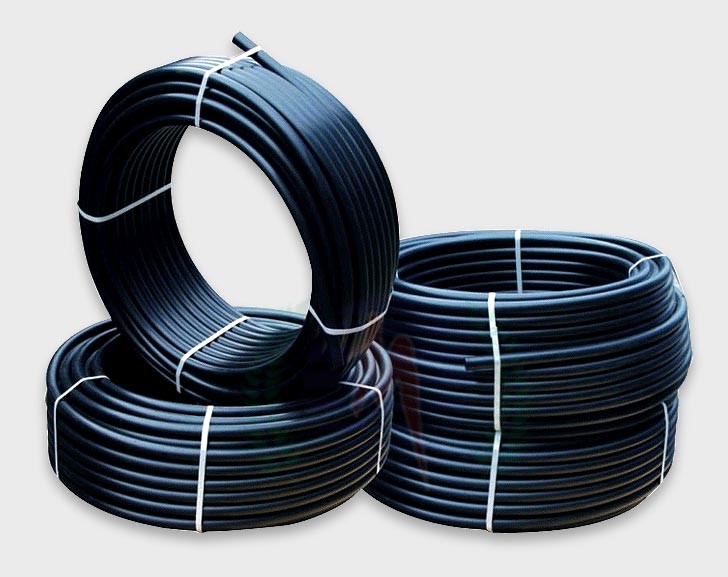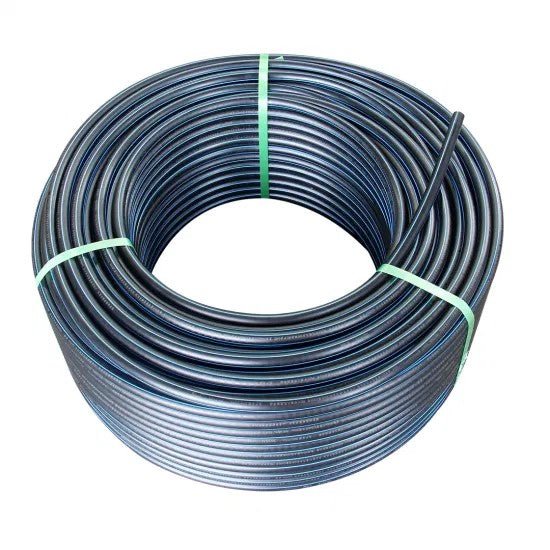The Essential Actions for Successful Installation of HDPE Pipeline in Your Next Job
Effective setup of HDPE pipe calls for cautious preparation and implementation. Trick actions include examining task demands, preparing the website, and choosing appropriate joining techniques. Each phase plays an essential duty in making certain the stability and performance of the pipeline. Comprehending these essential actions can considerably affect the total success of the job - Texas hdpe pipe manufacturer. Nonetheless, the subtleties of each step may hold the secret to getting over usual challenges encountered during setup
Comprehending the Conveniences of HDPE Pipeline
High-density polyethylene (HDPE) pipe uses numerous benefits that make it a favored choice for various applications. Its high resistance to deterioration and chemicals assurances durability popular environments, substantially prolonging the life expectancy of installations. In addition, HDPE's versatility permits for much easier setup, particularly in challenging surfaces, as it can flex without damaging. The light-weight nature of HDPE pipe streamlines transport and handling, decreasing labor costs throughout installment.
Additionally, HDPE pipe is understood for its reduced rubbing coefficient, which boosts liquid flow and lessens energy consumption. Its smooth construction minimizes the risk of leakages, adding to better resource monitoring and environmental management. In addition, HDPE is recyclable, aligning with lasting methods and minimizing ecological impact. Generally, the combination of stamina, versatility, and eco-friendliness makes HDPE pipe a remarkable option for a wide variety of tasks, from water distribution to commercial applications.
Planning Your HDPE Pipeline Setup
When intending a setup of HDPE pipeline, careful consideration of several key elements is essential to secure a successful task. First, task managers need to analyze the certain requirements of the pipe, including the planned usage, circulation prices, and environmental conditions. Comprehending these specifications will certainly assist the choice of appropriate pipeline measurements and material quality.
Next, timelines ought to be established, factoring in purchase schedules and any possible hold-ups. Control with regional authorities for permits and regulatory conformity is likewise necessary. Additionally, an in-depth spending plan must be prepared, incorporating all expenses connected with products, labor, and equipment.
Last but not least, it is necessary to engage a certified group experienced in HDPE pipe installment. Their proficiency will aid minimize risks, guarantee adherence to market criteria, and inevitably contribute to the project's success. Comprehensive planning lays the foundation for a smooth installation procedure and resilient performance of the HDPE piping system.
Preparing the Site for Installation
Appropriate website preparation is vital for the successful setup of HDPE pipe. Before installation begins, the website has to be completely analyzed to guarantee it satisfies all needed demands. This consists of checking the ground for existing frameworks, utilities, and possible threats that can hinder the installation procedure.

Right elevation and positioning need to be established to preserve a regular gradient for drainage objectives. Correct drain around the installation site is additionally critical to avoid water accumulation, which can result in difficulties down the line.
Techniques for Signing Up With HDPE Pipelines
Achieving a dependable connection between HDPE pipes is essential for guaranteeing the honesty and long life of the setup. Different techniques exist for signing up with these pipes, each suited for various task requirements. Fusion welding is one of one of the most usual approaches, using heat to bond the pipe finishes together, producing a seamless and long lasting connection. This method can be further categorized right into outlet fusion and butt fusion, depending on the pipeline configurations.
Mechanical installations are another option, employing clamps and threaded ports to join sections of HDPE pipeline. While normally faster to install, they might need additional maintenance with time. Electrofusion is a specific technique that includes making use of electric current to warm and fuse the pipelines with specifically made installations, guaranteeing a solid bond. Selecting the proper signing up with strategy is critical, as it straight influences the overall performance and reliability of the HDPE piping system in the desired application.
Testing and Evaluation of Installed Pipeline
The testing and assessment of set up HDPE pipes are important to guaranteeing their functionality and long life. This process encompasses aesthetic evaluation methods, stress testing approaches, and leak discovery procedures to identify potential problems. By employing these methods, professionals can verify the integrity of the installment prior to it is placed right into use.
Visual Inspection Techniques
Using efficient aesthetic evaluation strategies is important for assuring the integrity of set up HDPE pipes. Inspectors must her latest blog systematically check out all visible areas of the pipeline to identify any type of signs of damages, misalignment, or improper installation. Secret signs to examine include joint stability, surface area irregularities, and links. Inspectors might utilize tools such as amplifying glasses or video cameras to boost visibility and information. It is necessary to look for indicators of environmental stress and anxiety, such as buckling or extreme bending, which could jeopardize performance. Consistent documents of searchings for permits for tracking modifications with time and assists guide required fixings. By sticking to well-known visual inspection procedures, job groups can notably lower the danger of future failures and ensure lasting reliability of the piping system.
Pressure Evaluating Techniques
Aesthetic inspection acts as an initial action, yet it is not sufficient by itself to guarantee the efficiency of installed HDPE pipelines. Stress testing methods are necessary for making certain the stability of these systems. Normally, hydrostatic testing is utilized, where the pipes are full of water and based on pressure degrees over the intended operating pressure. This technique helps determine weak points or possible leakages. Pneumatic screening can also be utilized, although it lugs higher dangers due to the compressibility of air. Regardless of the approach picked, adhering to market criteria and safety and security methods is essential. After performing stress tests, thorough paperwork is essential to confirm the results and validate that the installation fulfills all operational requirements prior to proceeding to the following phase of the project.

Drip Detection Treatments
How can one guarantee that mounted HDPE pipes are cost-free from leaks? Reliable leak detection treatments are vital to protect the stability of the system. Initially, aesthetic evaluations must be done, trying to find indications of water accumulation or soil disintegration around pipeline joints. Following this, pressure screening can confirm the system's stamina. A common approach is the hydrostatic test, where water is presented under pressure, checking for drops that suggest possible leaks. Furthermore, advanced technologies, such as acoustic sensors or infrared thermography, can discover leaks that may not show up. Regular monitoring and upkeep further add to the long life of HDPE pipes, ensuring they stay leak-free throughout their functional life-span. Proper documents of these treatments is crucial for conformity and future recommendation.
Upkeep Tips for Long-Term Performance
To assure the long life of HDPE pipes, establishing a regular inspection schedule is vital. This positive method these details permits the early detection of possible problems, minimizing pricey repair services. Furthermore, implementing correct cleaning methods will assist maintain peak performance and stop build-up that can impact functionality.
Normal Examination Arrange
Although HDPE pipes are known for their sturdiness and resistance to rust, establishing a normal assessment timetable is crucial for ensuring their long-lasting efficiency. Regular assessments assist determine prospective problems such as leakages, joint honesty, and environmental impacts that may influence the pipe's performance. It is recommended that assessments occur a minimum of biannually, or extra often in settings with extreme conditions. Pipe Supplier American Plastics Midland. Throughout these evaluations, aesthetic checks need to be performed to detect indicators of wear or damage. Furthermore, using modern technology such as ultrasonic screening can provide more understandings into the pipe's condition. By applying an organized inspection timetable, job supervisors can proactively resolve problems, consequently extending the life-span of HDPE pipes and preserving system efficiency
Correct Cleansing Techniques
Proper cleaning techniques play an important duty in maintaining the long-term efficiency of HDPE pipes. Normal cleaning protects against the accumulation of particles, debris, and biofilm, which can result in blockages and reduced circulation efficiency. Operators needs to employ approaches such as high-pressure water jetting or foam cleansing to effectively eliminate contaminants without harming the pipeline surface area. It is vital to stay clear of using harsh chemicals that may degrade HDPE product. Furthermore, set up maintenance checks must click here for more consist of aesthetic assessments for any type of indicators of wear or damage. Properly educated personnel must accomplish these cleansing procedures, guaranteeing conformity with safety and security and environmental regulations. By applying these techniques, the life expectancy of HDPE pipes can be greatly prolonged, making certain optimal performance throughout their operational life.
Regularly Asked Concerns
What Are the Environmental Effects of HDPE Pipeline Manufacturing?
The ecological effects of HDPE pipeline manufacturing include greenhouse gas discharges, energy consumption throughout manufacturing, prospective plastic pollution, and difficulties in recycling. Nevertheless, HDPE's durability and resistance to rust can reduce some environmental worries.
Exactly How Does HDPE Pipe Compare to Other Products?

What Equipment Are Necessary for HDPE Pipeline Installment?
Necessary devices for HDPE pipe installment include a blend maker, pipeline cutters, shovels, determining tape, and safety gear. Appropriate equipment assurances reliable, safe handling and installment, adding to the project's general success and integrity.
Are There Any Kind Of Particular Rules for HDPE Pipe Installment?
Particular regulations for HDPE pipe installment vary by region, usually controlled by local, state, or government codes. Compliance with these regulations guarantees safety, environmental management, and performance, making adherence necessary for successful project end results.
Can HDPE Water Lines Be Recycled After Use?
Yes, HDPE pipes can be reused after usage. Their thermoplastic nature permits for reprocessing, making them appropriate for recycling right into brand-new items. This sustainability aspect contributes to environmental conservation and advertises circular economy techniques in building and construction.